Abstract
Challenging 1-day-old White Leghorn chicks perorally with 2.6 x 10(1) to 2.6 x 10(5) Escherichia coli O157:H7 bacteria per chick resulted in cecal colonization at all levels. Two of six chicks inoculated with only 2.6 x 10(1) E. coli O157:H7 bacteria carried 10(3) to 10(4) E. coli O157:H7 bacteria per g of cecal tissue when sacrificed 3 months postinoculation. E. coli O157:H7 colonization persisted at least 10 to 11 months when chicks were administered 10(8) E. coli O157:H7 bacteria. Eggs from five hens that were fecal shedders of E. coli O157:H7 until the termination of the study (10 to 11 months) were assayed for E. coli O157:H7. The organism was isolated from the shells of 14 of 101 (13.9%) eggs but not from the yolks and whites. Considering that chicks can be readily colonized by small populations of E. coli O157:H7 and continue to be long-term shedders, it is possible that chickens and hen eggs can serve as vehicles of this human pathogen.
Full text
PDF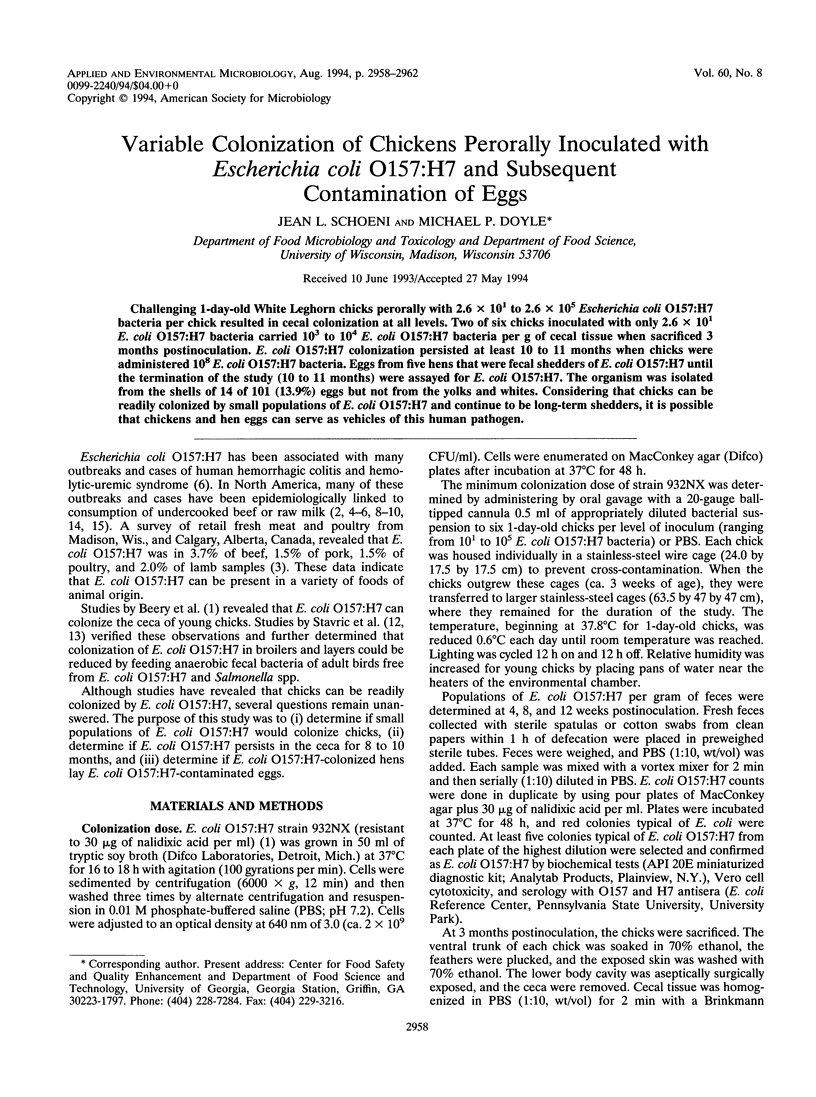
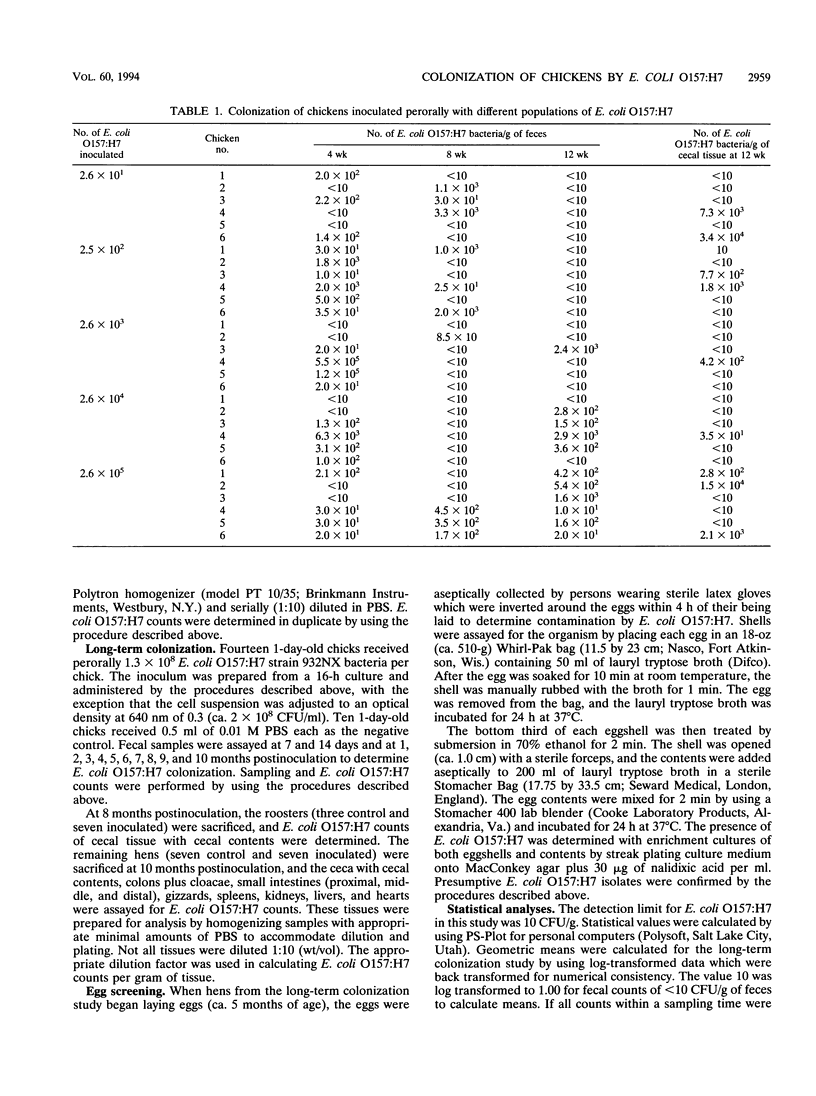
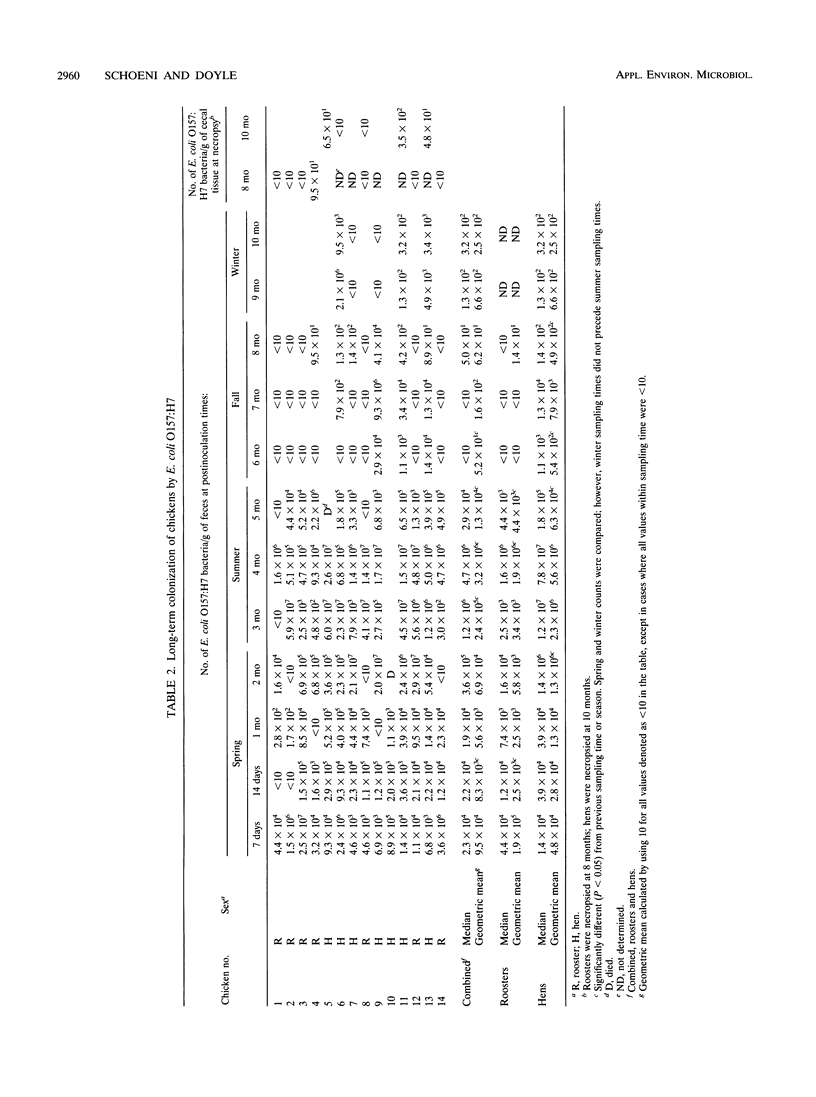
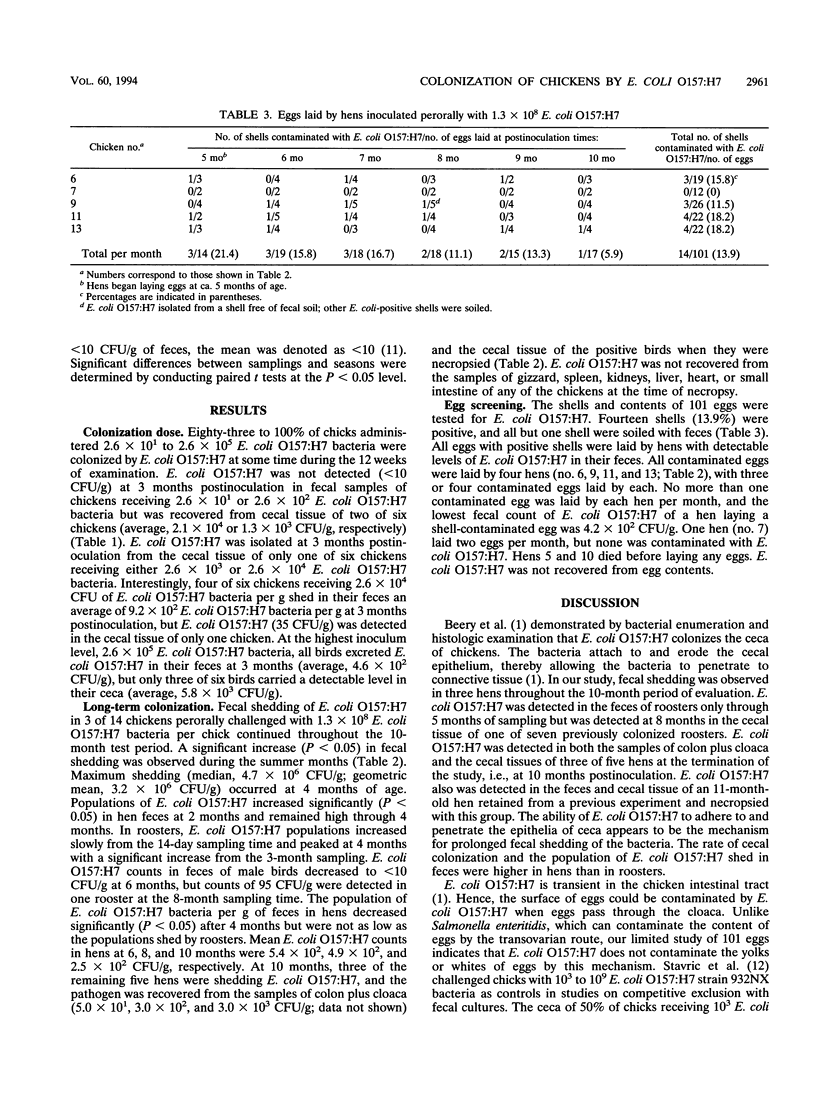
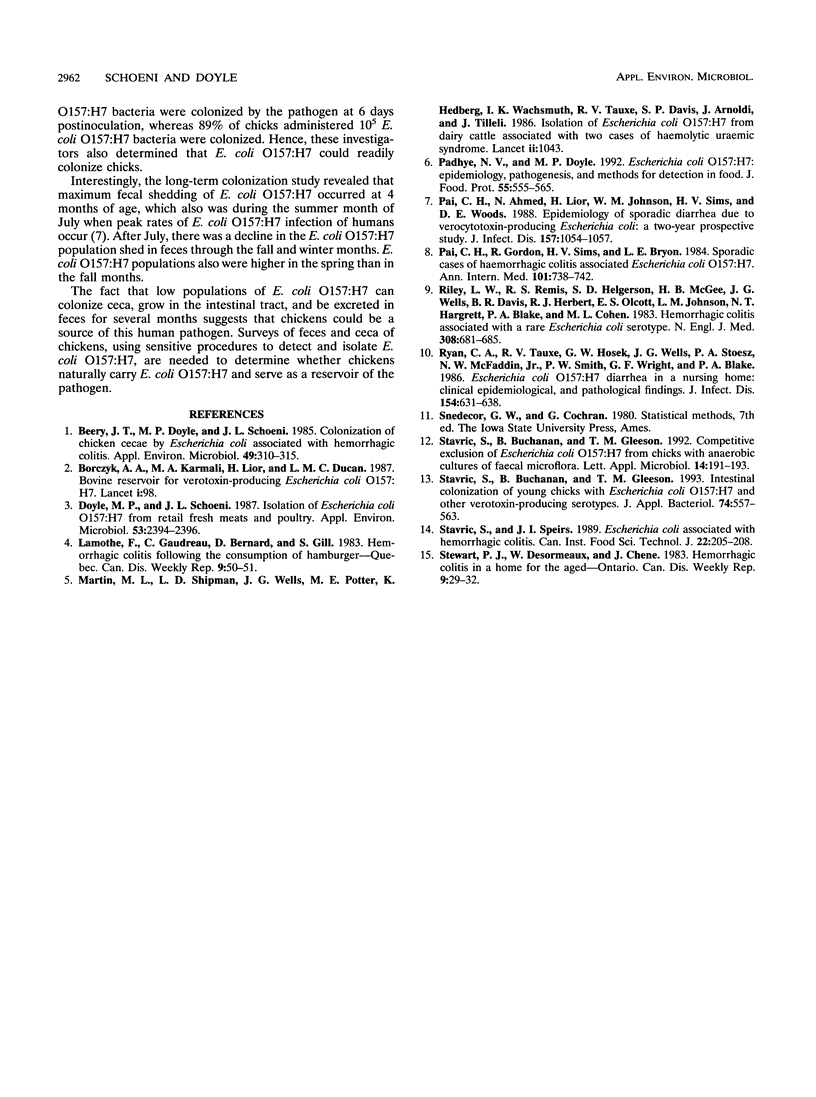
Selected References
These references are in PubMed. This may not be the complete list of references from this article.
- Beery J. T., Doyle M. P., Schoeni J. L. Colonization of chicken cecae by Escherichia coli associated with hemorrhagic colitis. Appl Environ Microbiol. 1985 Feb;49(2):310–315. doi: 10.1128/aem.49.2.310-315.1985. [DOI] [PMC free article] [PubMed] [Google Scholar]
- Borczyk A. A., Karmali M. A., Lior H., Duncan L. M. Bovine reservoir for verotoxin-producing Escherichia coli O157:H7. Lancet. 1987 Jan 10;1(8524):98–98. doi: 10.1016/s0140-6736(87)91928-3. [DOI] [PubMed] [Google Scholar]
- Doyle M. P., Schoeni J. L. Isolation of Escherichia coli O157:H7 from retail fresh meats and poultry. Appl Environ Microbiol. 1987 Oct;53(10):2394–2396. doi: 10.1128/aem.53.10.2394-2396.1987. [DOI] [PMC free article] [PubMed] [Google Scholar]
- Martin M. L., Shipman L. D., Wells J. G., Potter M. E., Hedberg K., Wachsmuth I. K., Tauxe R. V., Davis J. P., Arnoldi J., Tilleli J. Isolation of Escherichia coli O157:H7 from dairy cattle associated with two cases of haemolytic uraemic syndrome. Lancet. 1986 Nov 1;2(8514):1043–1043. doi: 10.1016/s0140-6736(86)92656-5. [DOI] [PubMed] [Google Scholar]
- Pai C. H., Ahmed N., Lior H., Johnson W. M., Sims H. V., Woods D. E. Epidemiology of sporadic diarrhea due to verocytotoxin-producing Escherichia coli: a two-year prospective study. J Infect Dis. 1988 May;157(5):1054–1057. doi: 10.1093/infdis/157.5.1054. [DOI] [PubMed] [Google Scholar]
- Pai C. H., Gordon R., Sims H. V., Bryan L. E. Sporadic cases of hemorrhagic colitis associated with Escherichia coli O157:H7. Clinical, epidemiologic, and bacteriologic features. Ann Intern Med. 1984 Dec;101(6):738–742. doi: 10.7326/0003-4819-101-6-738. [DOI] [PubMed] [Google Scholar]
- Riley L. W., Remis R. S., Helgerson S. D., McGee H. B., Wells J. G., Davis B. R., Hebert R. J., Olcott E. S., Johnson L. M., Hargrett N. T. Hemorrhagic colitis associated with a rare Escherichia coli serotype. N Engl J Med. 1983 Mar 24;308(12):681–685. doi: 10.1056/NEJM198303243081203. [DOI] [PubMed] [Google Scholar]
- Ryan C. A., Tauxe R. V., Hosek G. W., Wells J. G., Stoesz P. A., McFadden H. W., Jr, Smith P. W., Wright G. F., Blake P. A. Escherichia coli O157:H7 diarrhea in a nursing home: clinical, epidemiological, and pathological findings. J Infect Dis. 1986 Oct;154(4):631–638. doi: 10.1093/infdis/154.4.631. [DOI] [PubMed] [Google Scholar]
- Stavric S., Buchanan B., Gleeson T. M. Intestinal colonization of young chicks with Escherichia coli O157:H7 and other verotoxin-producing serotypes. J Appl Bacteriol. 1993 May;74(5):557–563. [PubMed] [Google Scholar]


